Origin Live Calypso mk4 with Multi-Layer Platter, Illustrious arm and Silver Hybrid cable
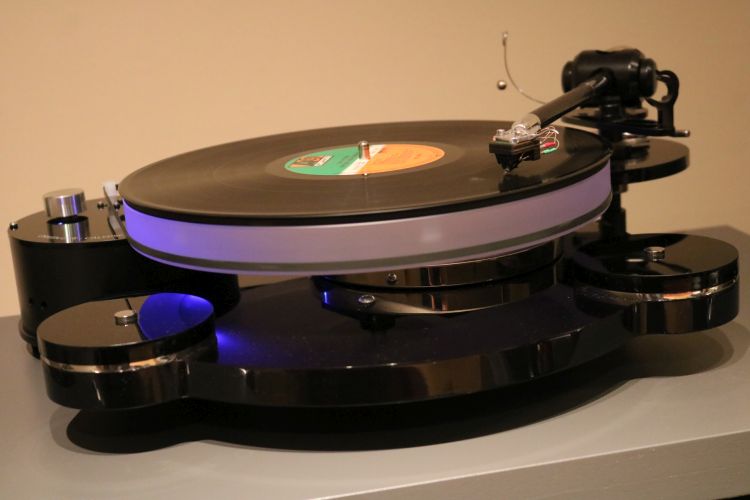
Review sample supplied by Origin Live
Retail prices:
Calypso Mk4 ~2500 euro
Multi-Layer platter ~770 euro
Illustrious Tonearm ~2100 euro
Silver Hybrid external tonearm cable detachable ~667 euro (as reviewed)
Silver Hybrid external tonearm cable hard-wired ~535 euro
Regular readers may have spotted it in my system as early as May this year: the beautiful Origin Live Calypso Mk4. You might wonder what took me so long. Well, only moments after hearing the reviews sample I knew that it was something very special and I had to have one. Between this materializing and my finding the time to properly review it, quite some time passed, but I put it to good use! Funnily enough, the initial motivation for reviewing this turntable was that I was reviewing the costly Aidas Rainbow MC cartridge and I wanted to use it in a player more worthy than my stable of 40+ years old Thorens turntables. After having obtained such great results with the Origin Live Onyx tonearm in a refurbished Thorens TD160B and having read fabulous reviews of various Origin Live turntables, I got in touch with Mark Baker and explained my situation to him. He was more than happy to supply a review sample and he also told me that, after hearing it, I would likely not want to let it go anymore. I was more than intrigued and, boy, how right he was!
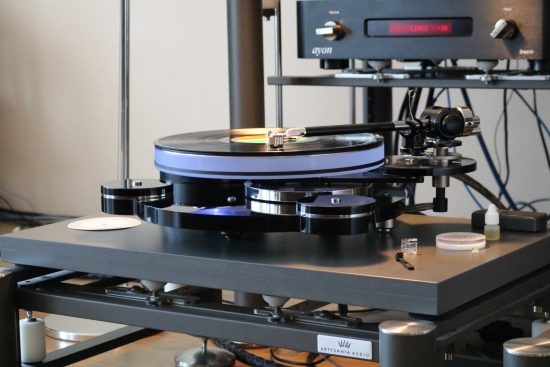
Configuration
In discussing the ideal configuration with Mark, we came to a combination that might seem unusual but which actually works splendidly. The basis is formed by the ~2500-euro Calypso Mk4 deck is one step up from the entry-level model but in its most recent incarnation. Mated with it is the ~2100-euro Illustrious tonearm which is positioned near the upper end of the mid-level section. Further, the standard Calypso platter is substituted for the ~770-euro Upgrade Multi-Layer Platter. To top it off, the ~667-euro Silver Hybrid tone-arm cable is also added. As I had reservations about potentially not liking the “silver”-aspect of this cable, the standard copper “Upgrade” cable was also added. But as it would later turn out, I really needn’t have worried. The total cost of the turntable in this configuration sans cartridge is approximately 6000 euro, depending on the UK Pound exchange rate. Not pocket change but certainly also not much for what’s offered and it is most definitely a far cry from what some brands dare ask for their turntables.
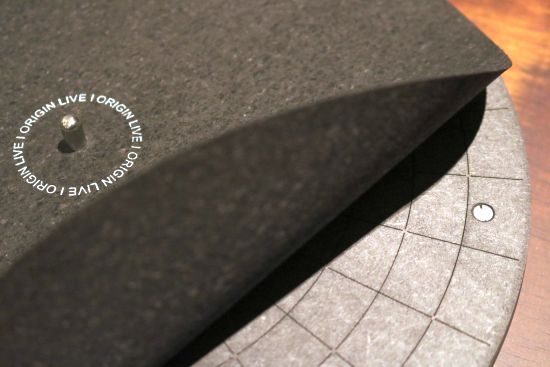
Above and below: Multi-Layer platter, consisting of 4 layers of different materials, or 3 layers if you do not count the upper cork/rubber mat.
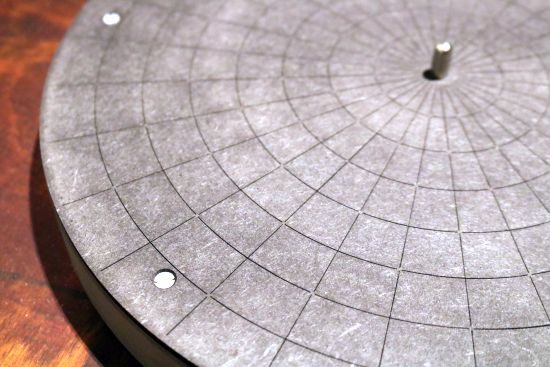
To use an arm that costs almost as much as the deck may seem counter-intuitive but as Mark explained, this would provide the best performance for the total cost. Taking a more upscale deck as the basis and using a lower-end arm would actually be less ideal for the performance. This would not be the first subject on which Mark would turn out to have ideas that deviate from the more established norm, but as I discovered some of the turntable’s peculiarities and experimented with alternatives, it turned out he was right, every step of the way. At this point, I actually think that he is one of the very few designers who actually investigate all the aspects of turntable engineering and carefully re-evaluate everything with respect to the sonic end result. For the Origin Live turntables, Mark uses whatever solution that sounds best, not the one that accepted engineering knowledge dictates as the best solution.
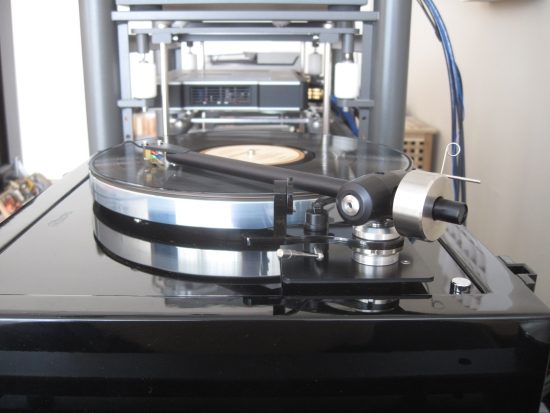
Above: Origin Live Onyx tonearm on a fully-refurbished Thorens TD160B turntable.
Construction
All of the Origin Live turntables have a very unique construction. There is no sub-chassis in the traditional sense, but the platters are also not as rigidly coupled as with traditional mass drives. Of course, the arm has a rigid connection to the platter’s bearing and the distance between these two opponents is fixed. But it is done in a clever way that does allow a small and controlled amount of movement in other directions. It also allows a subtle springiness in the vertical plane. But fear not: it’s not at all comparable to Thorens or Linn turntable behavior. The Origin Live Calypso turntable is super-steady which makes precisely cueing the arm so much easier than with the aforementioned springy sub-platter designs.
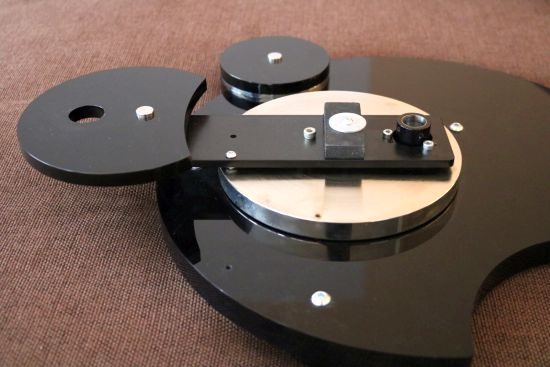
The arm plate is mounted to the main chassis in the middle, allowing the bearing on one end and arm board on the other end to “float” ever so slightly.
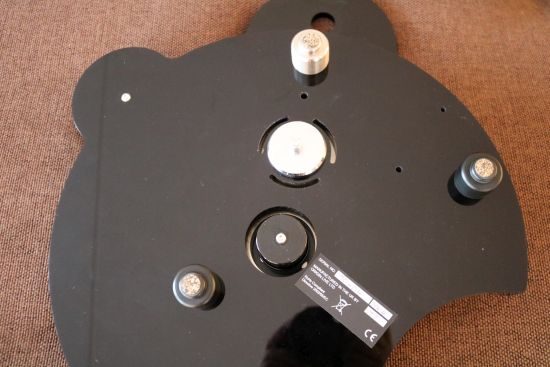
Above: the silver ring is where the arm plate is mounted, note the slits around it that further prevent an overly tight construction. Incidentally, the manual makes a point of setting the height-adjustable feet such that they are never fully tightened against the main chassis for the best sound.
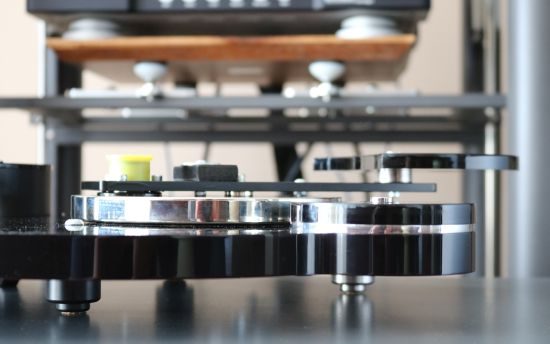
The subtle springiness is achieved by means of partially overlapping layers of metal and acrylic material. Together, they make up the player’s chassis and arm plate, which are coupled in different positions so as to create something slightly similar to a car’s rear-wheel leaf springs. But I hasten to add that this resemblance is only visual. In use, the platter sits entirely still and nothing bounces about. What this particular coupling method does achieve is the avoidance of choking the music into something overly technical as it so often happens with super-rigid turntables, and even with high-end models. If you think of a typical Rega turntable, these are famous for their pacing, and rightfully so, but they accomplish this at the expense of a significant reduction in fluidity, smoothness, refinement, air, and most importantly, the lyrical aspects which I often refer to as musical flow. If you simply clamp everything together very tightly on a single board, you enable fast transfer of energy. This results in the pacy sound of such turntables but you also make it easy for all the other vibrations to mess up the sound. Sub-chassis turntables typically behave very differently because their spring system effectively decouples the platter and tonearm from vibrations in a hopefully carefully adjusted frequency range. The downside of such turntables is pretty much always a reduction in solidity, bass slam, and drive. This is, of course, over-simplifying the matter but my aim for this article is only to bring across how the Origin Live turntables are positioned in between the two more common extremes.
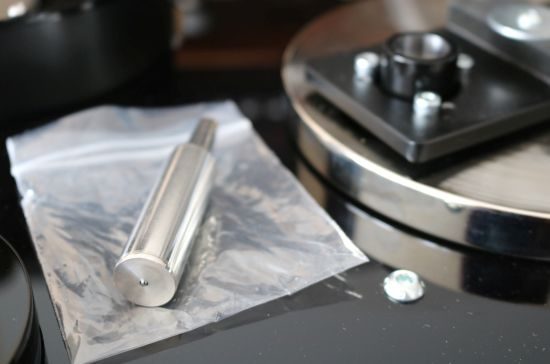
The bearing is precision-made but unlike the bearings of pretty much all competitors’ designs, this one has an intentionally loose fit. As Mark explained, it is not too difficult to make a bearing to extremely tight tolerances that fits with absolutely no play but in listening tests, it became clear that these do not sound as good as his looser-fitting design. As Mark also explained, the play that you can feel when wiggling it around by hand does not relate to the stability that is created when the well is filled with oil and the platter is turning. When in motion, the rotation is completely stable but, again, without impeding the musical flow and choking the life out of the music as it can happen with some extremely over-engineered designs.
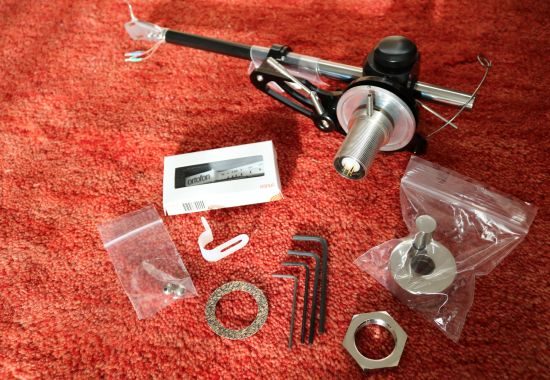
The Illustrious arm is something special, too. Made from a combination of materials it does not have the common gimbal bearing nor an unipivot but a dual-pivot to combine the effortless and free-flowing musical behavior of unipivot designs with the operational stability, full-bodied sound, and bass solidity of gimbal designs.
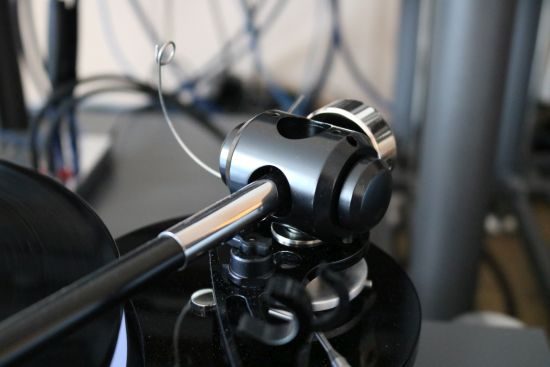
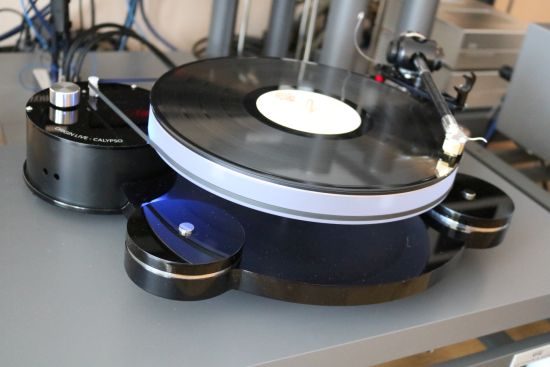
The motor pod contains a very smoothly and quietly running Swiss DC motor and a Light Speed Control circuit. As the Origin Live literature reads: “The ideal way to overcome speed drift is to control the speed of the platter itself rather than the motor. Direct drive decks are renowned for their consistent speed.” But, from personal experience, I know that DD systems introduce their own problems and often make for a “nervous” sound with shorter sustain and decay than with good belt-driven turntables. The Light Speed circuit measures the time it takes between turns using a reflective strip on the underside of the platter and very smoothly adjusting the speed accordingly. As per the official specs, this system achieves a wow and flutter of only 0.04% which is on par with the best DD turntables. The best part of this circuit, perhaps, is that it guarantees accuracy regardless of belt wear, motor age, pod position, and temperature, meaning that you won’t have to worry about any of these factors. The pulley, incidentally, is made of nylon which is much harder to work with than metal. Here, again, the genius of Mark Baker is evident as he is aware that a higher degree of visual perfection can be achieved with metal but nylon simply sounds better and so that is what he uses.
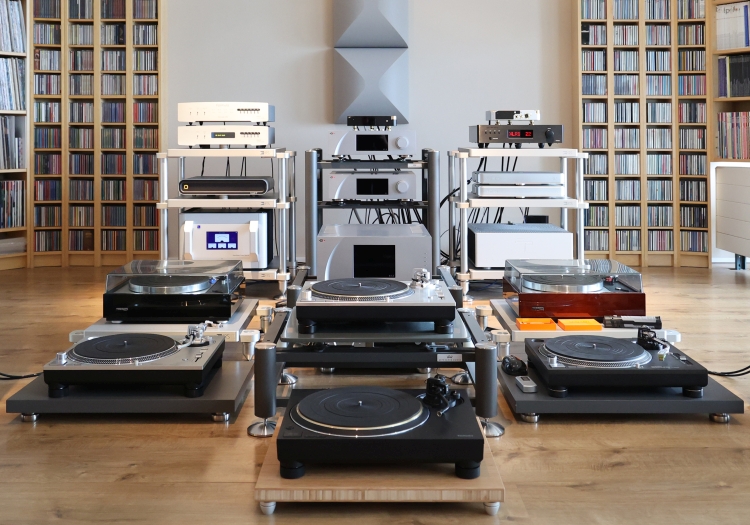
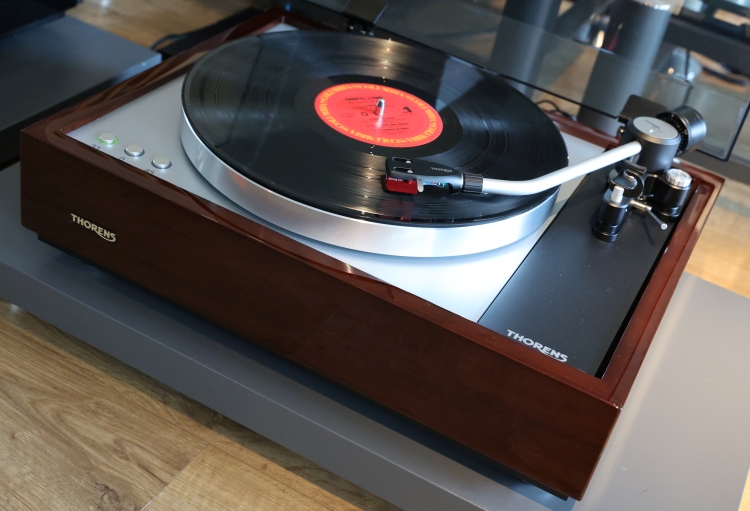
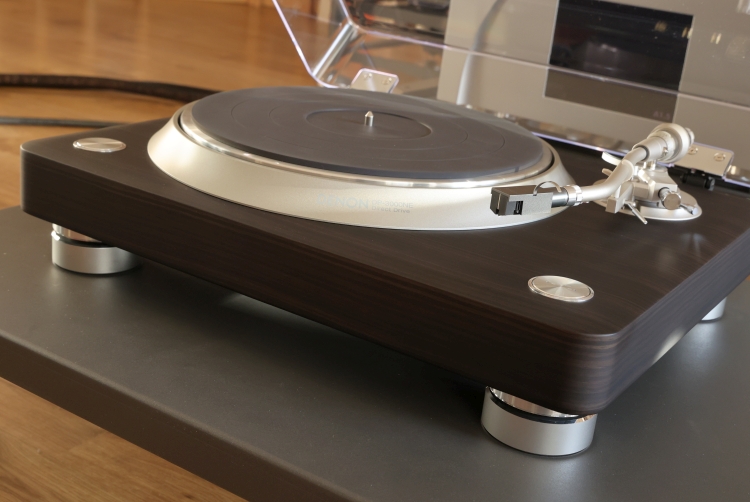
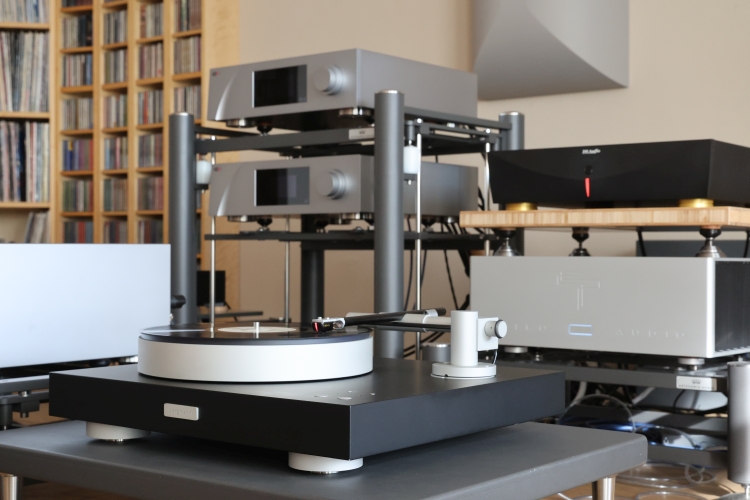
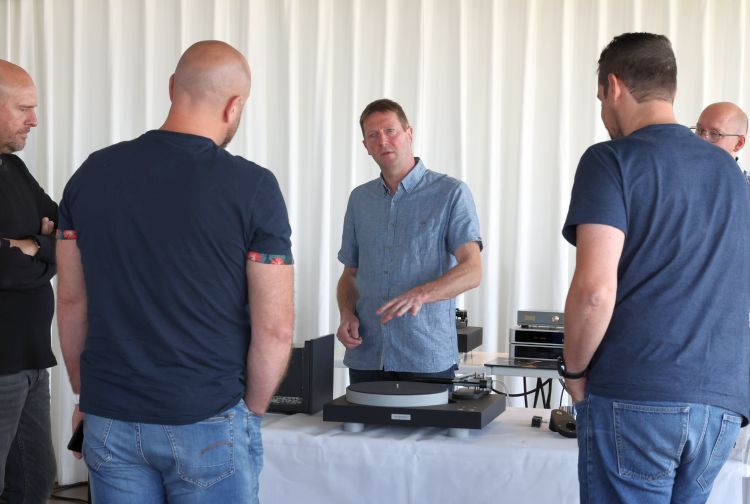
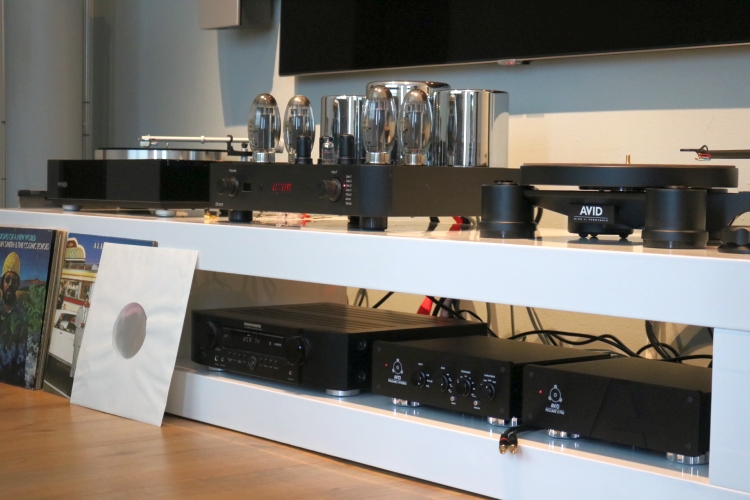
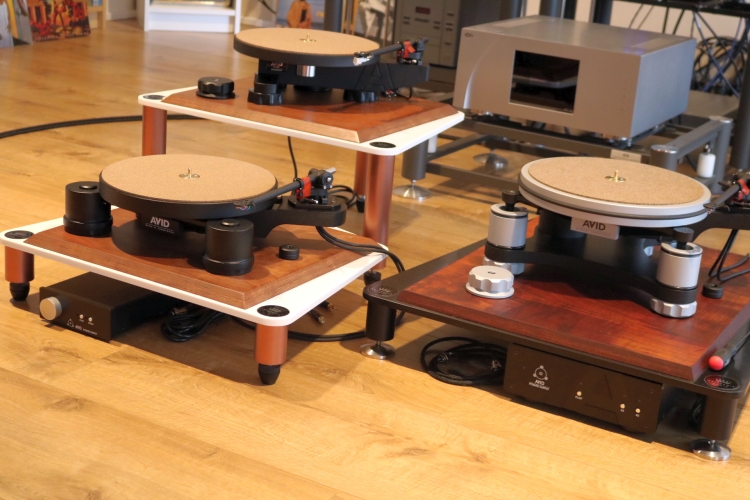
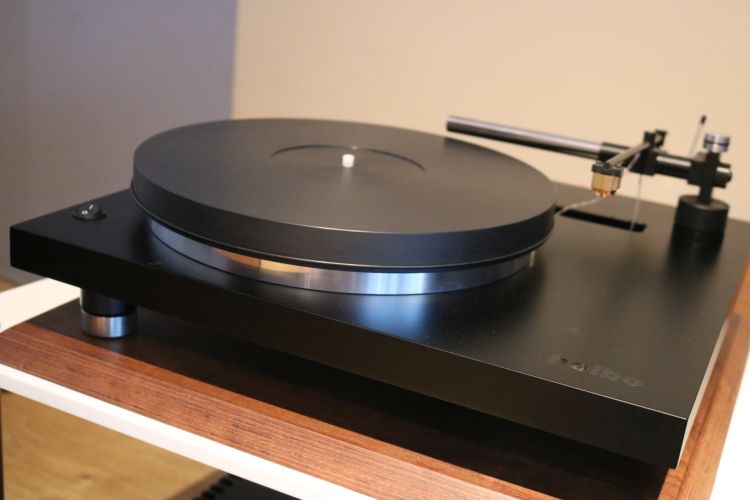
Hello Christiaan, I own the Origin Live Sovereign Mk4 turntable fitted with the Origin Live Enterprise Mk4 tonearm. I really appreciate your in depth reviews in which you go to great efforts in regards to not just the sound quality but also to inform us the best set up and tuning.
In this regards, with your “Update 21-06-2020” (review dated 11 December 2019) I was wanting a clarification.
When you say “the (horizontal) hex-screw fixed as strongly as I can using only thumb and index finger” do you mean that one does NOT use an Allen Key at all to achieve this level of tightness but ONLY the naked thumb and index finger?
Kind regards,
Stuart Martin
Hi Stuart, thanks for pointing this out. Reading it again I see that I did not explain it entirely correctly. I do use the Allen key and tighten the screw so that it just bites into the shaft but not any further. Hope this helps. I also updated this in the TT and cable reviews.
Hi Christiaan,
Hope all is good. I have never seen/heard an Origin Live Turntable in the flesh.
But, after reading and looking at info on their webpage, I became very interested and reading your review, is icing on the cake with 2 scoops and a cherry. Just wanted to upgrade after 12 years. Yeah, I went ahead and ordered a Sovereign mk4 special with Enterprise Arm and hardwired Silver Hybrid 2-S Arm cable. I dont think they have much traction here in the USA but, I took the plunge. I will be visiting my daughter in Boxtel in a few weeks and I will stop by my buddy Ertugrul / Amadeus Audio in Vinkeveen to do some listening. You should check him out. He is on your level. As usual, great website, great writing, keep up the great work.👍🏽🍾
Thanks, Clive, and congrats on your new turntable! Thanks for the tip, I know of Amadeus, but it’s not come to a visit just yet.
Hi Clive Williams, well done on your new audio purchase! I am sure you will appreciate just how good this Origin Live combination is – as I have.
Be sure to take care with the placement (absolutely level) and on a separate support if possible. I used a compressed bamboo shelf attached to a concrete block wall and if I remember correctly on the O/L website Mark recommends using solid oak.
Hi Stuart, I second your recommendations for careful setup. Solid oak, I imagine, will indeed work well with the OL turntable, and in general, hard materials will likely work best, given that the turntable already has various grades of flex and suspension built-in. Note that lacquering has a major influence on the sound. For instance, an untreated or oiled Bamboo platform may sound a little dull or lackluster while one with multiple layers of hard lacquer can sound very open and exciting. I always say, just try it out:-)
Hello Stuart,
Well, I have finally received my O/L Sovereign and Enterprise tonearm. Had it about 2 weeks so far. I was really surprised. It is definitely a step up from my current setup . Quite a different design from what I am used to. A little tricky to set up but, worth the effort. The tonearm requires a little more time to tweek such as, Anti-skate. When everything is clicking, a real treat. A wonderful transparent view into the Soundstage with the full bandwidth in action.
I am really enjoying it.
That’s great to hear Clive!
Yes I agree (of course!) that it is a truly wonderful set up. Re the anti-skate, make sure the platform the turntable is sitting on is absolutely level (use a serious bubble level) as this can effect it.
All the best! Stuart
Hey Stuart,
Great to hear from you. Wow, I can only imagine what it would sound like. I see Audiophiles really like the models lower in the range. I had quite a few Turntables to choose from. It was driving me a little crazy to make a choice. A local favorite , the VPI-HW 40 was a front runner but, their prices went up. I found the Origin Live package to be pretty cost effective. Thanks for the advice.
I will follow all instructions. I have a very sturdy rack. I will probably look into adding one of the IsoAcoustics Delos platforms. Anyway, the rest of my Phono gear should match up pretty good:- Lyra Atlas Lambda SL, Pass XP 27, Thrax Step up Transformer. I am waiting from Origin Live for full confirmation, I just put in the order a few hours ago. Their prices will also go up today . Btw, I have the Gravity One record weight and the Tonearm wire burn in cable.
Enjoy, Stay in touch.